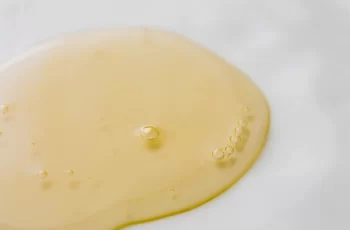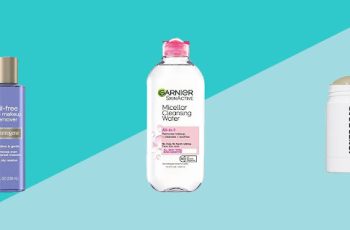
Can I use Hyaluronic Acid with Retinol?
Want to hear the good news? You certainly can use hyaluronic acid with retinol, and you may be interested to hear how many skincare experts say it’s the best way of reaping the rewards of both these powerhouse ingredients.
Quite often the drying side effects that regularly occur when using retinol in your routine are counteracted thanks to the hydrating properties of hyaluronic acid. By using these two powerful ingredients together you are able to target signs of ageing, such as fine lines and wrinkles as well as any skin damage that have occurred from exposure to free radicals, such as pollution, UVB/UVA rays, and central heating.
So, now you have a little more clarity about using hyaluronic acid with retinol, let’s investigate further to see exactly what you can expect to see when you team these impressive, powerhouse ingredients together.
What goes first hyaluronic acid or retinol?
This is very much dependant on the product formula containing each ingredient. This is because to gain the best results from your skincare routine you need to apply your products starting with the thinnest to the thickest formulas. For example, if your retinol is formulated into a moisturiser, it would need to be applied after your hyaluronic acid if it is in a serum.
If you are wanting my advice on the best way of applying your products, I would suggest aiming to apply retinol first, followed by hyaluronic acid. This ensures the retinol is able to absorb into the lower layers of the skin whilst having its drying effects reduced by the humectant properties of hyaluronic acid giving the skin a hydrated boost.
What can you not mix with hyaluronic acid?
The beauty of hyaluronic acid is the fact it can be used on almost all skin types as well as teaming it easily with other skin ingredients. However, some formulas, especially those that are known for being harsh on the skin, such as alcohol, fragrance, and high concentrates of potent skincare ingredients. By avoiding these you are ensuring your hyaluronic acid enriched products are able to perform to the best of their abilities without the disruption that can occur. You can find out more about hyaluronic acid over on our dedicated blog post.
What products should you not mix with retinol?
The main ingredients that you should mix are vitamin C, benzoyl peroxide and chemical exfoliants such as Alpha Hydroxy Acids (AHA) and Beta Hydroxy Acids (BHA).
Avoid layering vitamin C and retinol together as each of these ingredients are more effective at different parts of the day. For example, with the potent antioxidant benefits of vitamin C it is considered best to apply it during your morning routine to help combat exposure to free radicals. You can then use retinol during your evening routine to repair and rejuvenate the skin whilst reversing any damage already caused to the skin.
As for AHAs and BHAs they work on the outer surface of the skin, sloughing away the layer of dead skin cells and debris. By using retinol, you are likely to overstimulate the skin causing a flare-up in irritation, dryness, and discomfort. To prevent this, I would suggest using your AHA/BHA in an exfoliating toner and using retinol later in your routine once the acids have absorbed into the skin and the pH level have rebalanced.
Finally, if you apply benzoyl peroxide with retinol you will find you end up with them cancelling each other out. This therefore means it’s best not to alternate the days when you use each of these ingredients.
If you are wanting to know more about retinol and its skincare benefits, there is more information over on the Beauty Insiders, so do go and check that out.
Does retinol go on before or after moisturiser?
As I have already mentioned, this is very much dependant on the formula your retinol is in. Having said that, there’s nothing stopping you from mixing your retinol with your moisturiser, especially if it contains hydrating ingredients such as hyaluronic acid. If you are wanting to use them separately then it would be considered best to apply your moisturiser after your retinol. You’ll ensure that moisture is locked into place without preventing the potent properties of retinol from working at speeding up the skin cell renewal cycle keeping the complexion looking fresh, youthful, and full of bounce.
How long should you wait to apply moisturiser after retinol?
Ideally you need to wait around at least 20 minutes before applying your moisturiser after your retinol. This is considered the best amount of time to ensure the skin has fully absorbed the potent form of vitamin A and allowed the skin’s natural pH levels rebalance. This is an important step to remember as quite often skin irritation or allergic reaction are a result of pH imbalance with products with different pH levels being layered on top of each other too quickly.
What order should you use hyaluronic acid?
You’ll find that hyaluronic acid is often formulated into skincare products that are applied in the later stages of your routine, such as serums, moisturiser, and face oils. With the skincare rule I have previously mentioned of applying products from thinnest to thickest, this basically means hyaluronic acid is used in the later stages of your routine. One tip I would say if you were wanting the best results from your HA product is using a serum and follow it with a moisturiser as the water content in the formula will help give the complexion a boost in hydration.
If you are wanting to know more about the best way of layering hyaluronic acid, especially if potent ingredients like retinol, don’t forget to check out this blog post.
There you have a little more information about whether you can use hyaluronic acid with retinol. I hope I have cleared up a few of your questions, but if you have any more come and follow us on Instagram.


